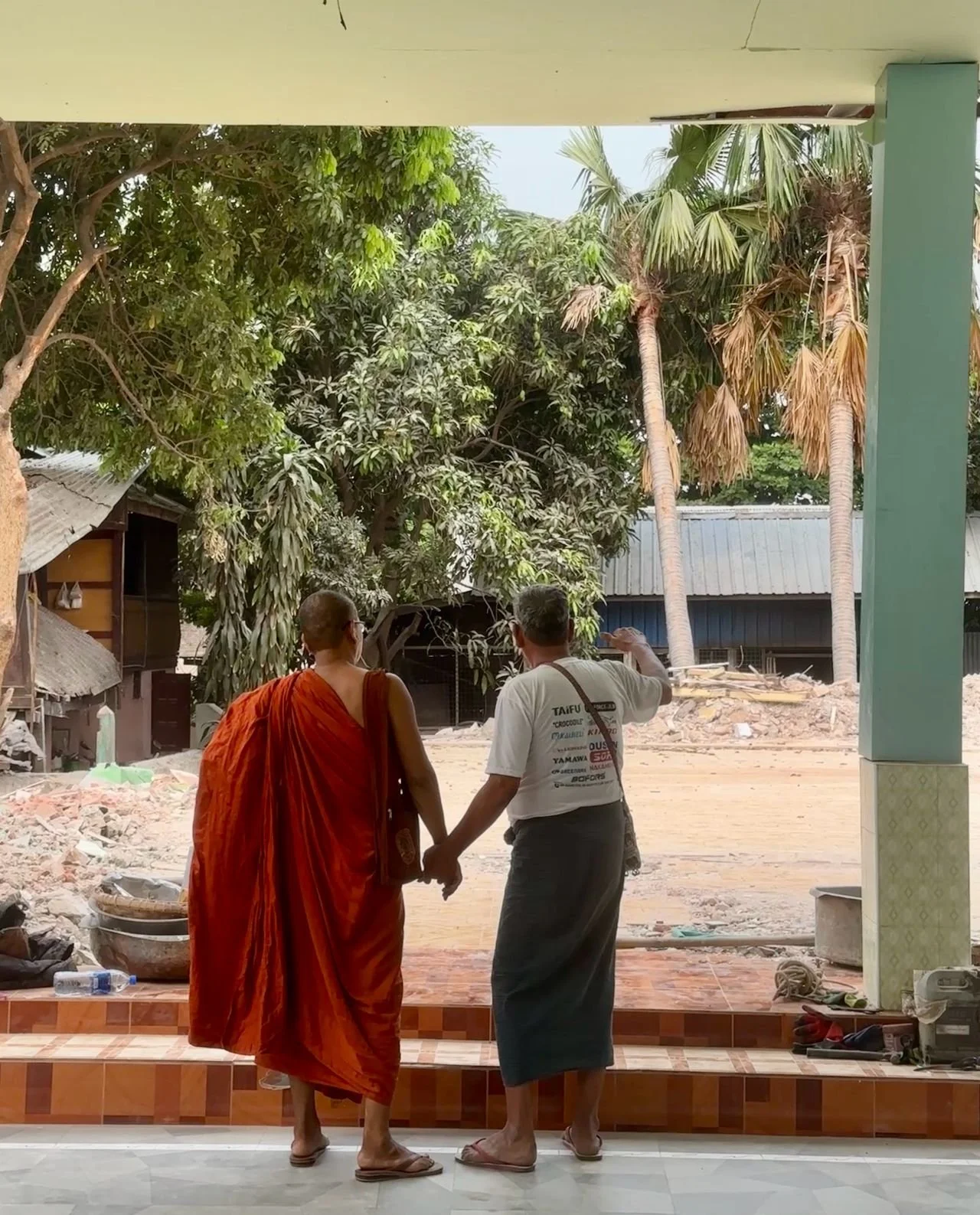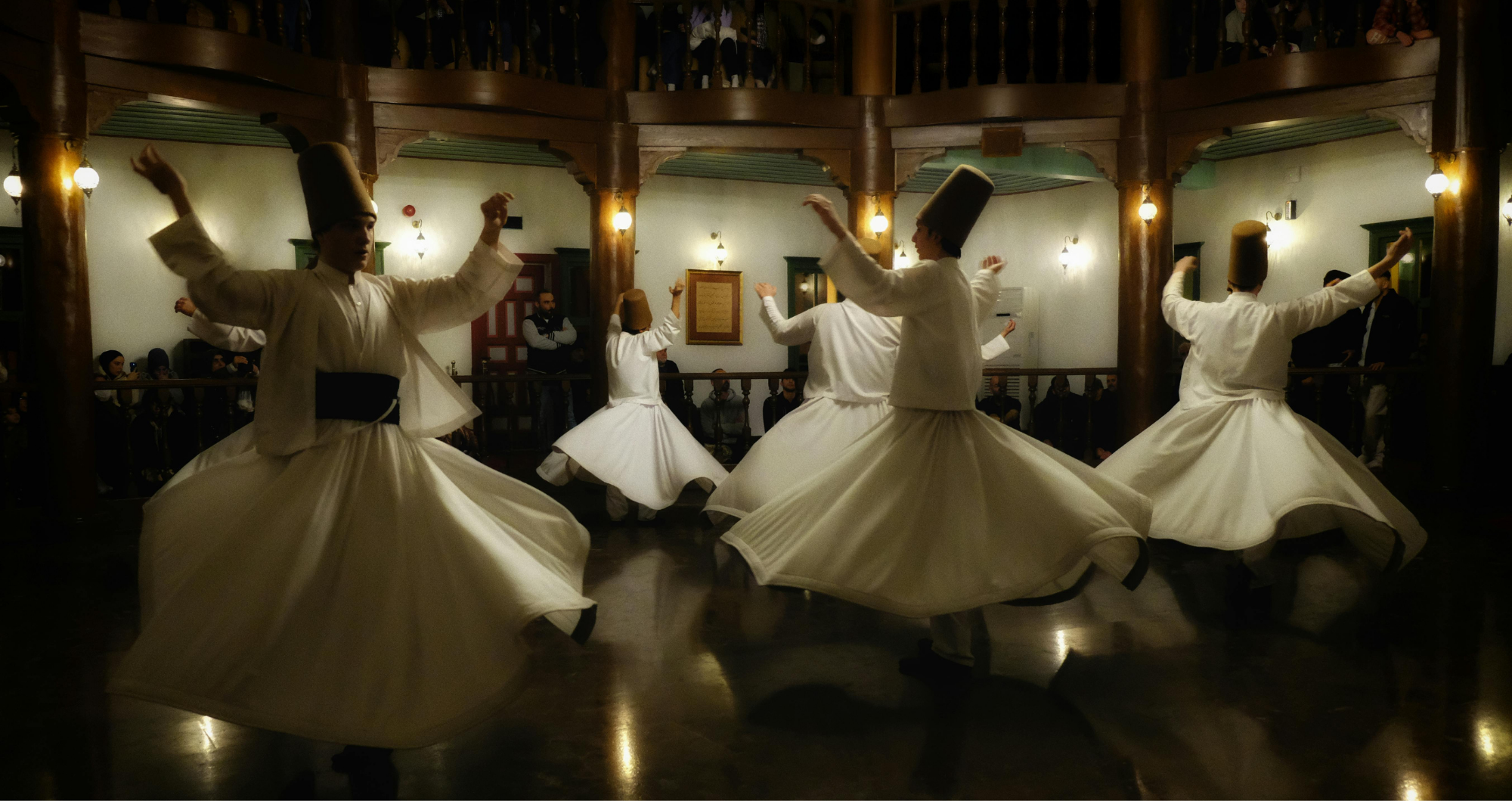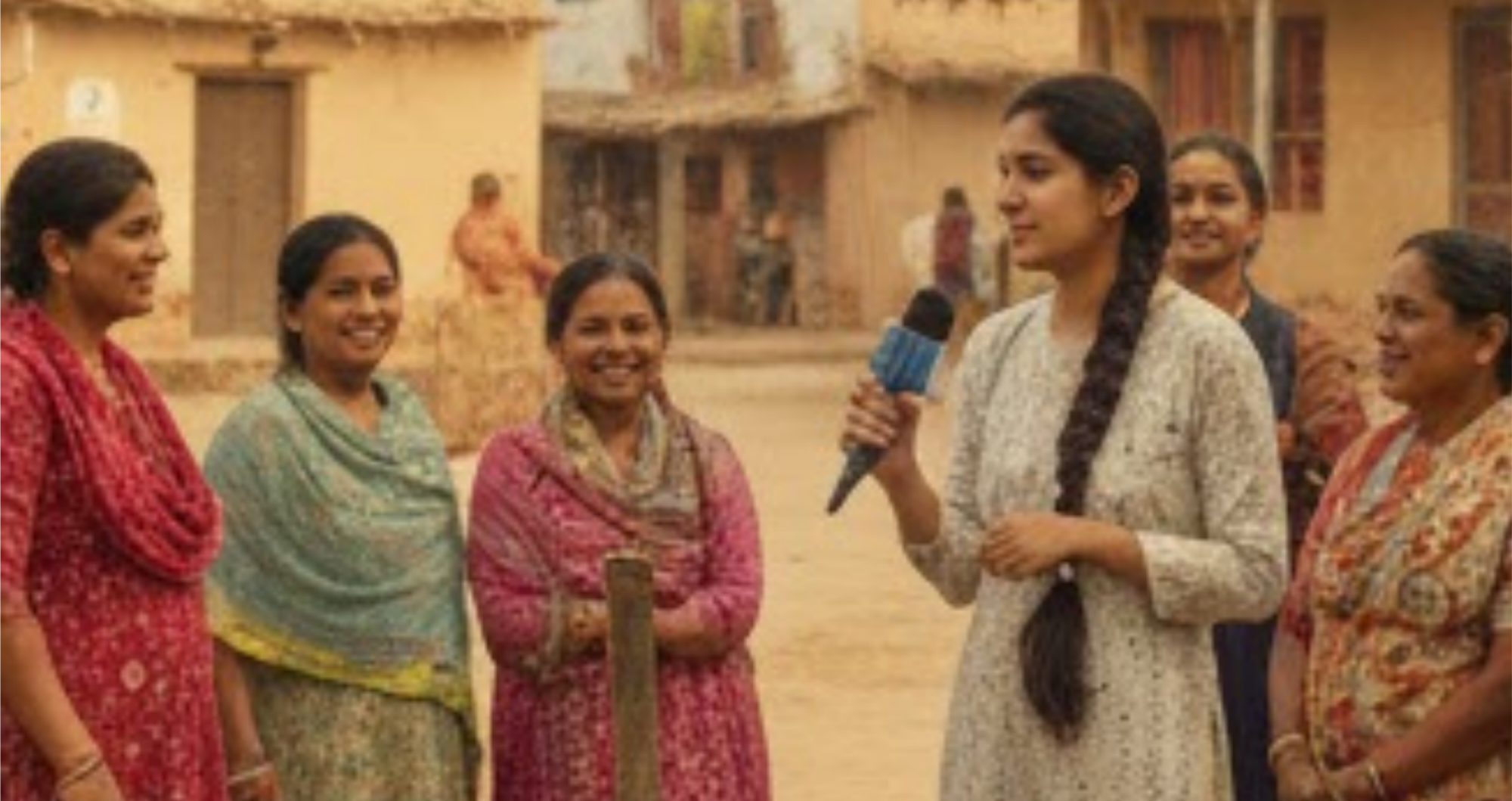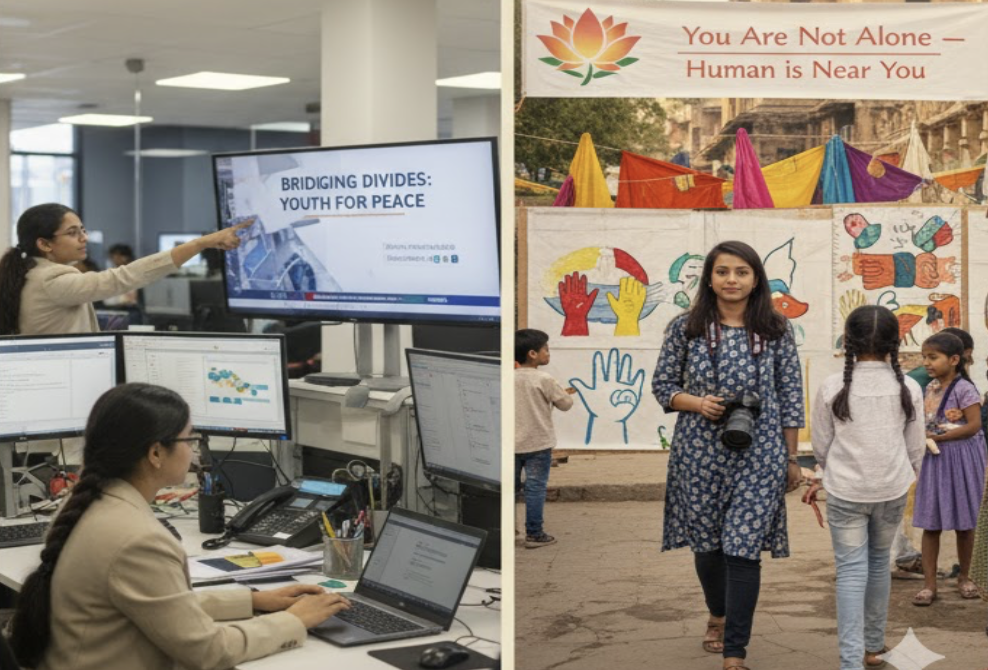Written By Daraa Patel
Peace is commonly envisioned as the result of conference hall negotiations or as a phrase in treaties between nations. But in reality, peace is lived in villages, classrooms, and newsrooms. It is constructed not only by what policymakers choose to do, but by the narratives that young people decide to tell—and the silences they decide to break.
In India, a land of contradictions and endless variety, the problems of peace are not far away or theoretical. They can be seen daily in increasing polarization, growing disparities, and the rapid dissemination of untruths that pit neighbor against neighbor. With the largest youth population in the world—nearly half (47%) of the nation's population are under 25 years of age (Gallup, 2023)—Indian youth are positioned to be a driving force in India's economic development. At the same time, the burden of overcoming these problems falls heavily on young shoulders. Among these Indian youth, young journalists and narrators possess a special power: the ability to frame stories that can either harm or heal.
Mainstream Indian media often prioritizes speed and sensationalism, producing headlines that emphasize conflict over context. In this landscape, there is limited space for nuanced narratives, marginalized voices, or stories of unheralded resilience. This tendency has important implications for peace in India, a country marked by social, cultural, and political diversity, and ongoing tensions across communities. The way stories are framed can either exacerbate divisions or foster understanding, making the role of media, and particularly young journalists, critical in shaping public perceptions and nurturing a culture of peace.
“Peace journalism is not just a reporting format—it is an obligation.”
Photo credit: Daraa Patel
Her story shows that peace cannot be left to individuals' coping mechanisms alone; it must also be constructed through structural transformation, accountability, and shared empathy. To report such a tragedy in a manner that does not perpetuate stigma, to situate it within the larger context of gender justice and access to mental health, is the very heart of peace journalism.
Young Indian journalists are entering this space with grit and courage. They are reporting on stories from rural settings where women must broker peace in patriarchal homes, from universities where students must resist the lure of polarizing politics, and from the internet where they must find emerging stories of solidarity that are germinating. To them, a story is not merely a headline; it is an act of building bridges. By making unheard voices heard, they remind us that peace is not only the negation of conflict, it is also the presence of justice and compassion.
This journey is not simple. The age of the internet has allowed misinformation to spread faster than fact. A thoughtless word can set communal temperatures soaring. A reporter who challenges power can be threatened or face worse consequences. For young journalists in India, reimagining peace means finding that balance between the urgency of the truth and the obligation not to cause harm. It takes courage to defy censorship and sensationalism, and to refuse to do journalism that serves power, but only people.
“...a story is not merely a headline; it is an act of building bridges. By making unheard voices heard, they remind us that peace is not only the negation of conflict, it is also the presence of justice and compassion.”
As India moves into the future, young journalists are more important than ever. They are not only witnesses to violence but also active participants in the process of reconciliation. Their accounts present possibilities: quiet interfaith initiatives upholding harmony, communities recovering from war, youth employing art, poetry, and social media to combat hate. They are small stories, nearly imperceptible in national life, but collectively they constitute the strands of a new peace imagination.
A new peace generation will be inscribed in the policies and narratives that we decide to communicate. If young journalists in India continue to adopt peace journalism—aided by platforms such as You Are Not Alone—they can help the nation break free from patterns of fragmentation and move towards a culture of compassion. The task is gargantuan, and so is the potential. Through their words, the vision of a more peaceful India—and an increasingly peaceful world—comes alive.
Daraa Patel is a journalist and Mental Health advocate. She is leading cross-border campaigns on social issues and mental health awareness. She has raised bold questions on taboo and underrepresented issues:
• Why is there silence on pre-marital HIV testing?
• Why does the number of orphans not match the number of orphanages in India?
• What if governments stopped spending on marriage-related schemes?
To learn more about her work and ongoing projects, follow her on Instagram @journo_dharaa, connect on LinkedIn or visit her Facebook profile.
Peace journalism presents a different vision. Rather than emphasizing violence, it attempts to give prominence to opportunities for dialogue, grassroots reconciliation, and the dignity of communities too readily reduced to stereotype. In a nation where geography, religion, gender, and caste still influence prospects, peace journalism is not just a reporting format—it is an obligation.
This is where efforts such as “You Are Not Alone – A Human is Near You” come into play. From a mental health awareness platform, it has blossomed into a people's movement to decrease both clinical and social disparities. We equip young journalists with the skills to write sensitively about gender, to avoid hasty labels, and report responsibly when reporting on stories involving violence and mental illness. We combat cyber hate by shifting how images and words represent women, crafting fearless branding initiatives that move them beyond the caretaker or victim roles. We are, in the process, creating a more equitable space for media—one where equality is not only discussed but visually and socially reinforced. Our work recognizes that there can be no lasting peace when young women are silenced, stereotyped, or shamed for their suffering. Engaging young women as active participants in peacebuilding is essential, as their perspectives, experiences, and leadership can transform communities and foster inclusive, sustainable solutions.
The urgency of this task cannot be exaggerated. Mental health is in crisis throughout India. It is not just a matter of clinical gaps in treatment but also that of social inequality's burden. The economic loss due to mental health conditions in India between 2012 and 2030 is estimated at USD 1.03 trillion. Furthermore, a multi-city study conducted by SRM University-AP found that nearly 70% of college students aged 18-29 suffer from moderate to high levels of anxiety, 60% show signs of depression, and over 70% experience emotional distress. Female students reported higher distress and lower well-being than male students. I will never forget a case of a woman who took her life, leaving behind a note that stated, "Meditation is not helping me, sorry." She had been a victim of dowry harassment, domestic violence, and incessant harassment.
Issue 03 | Reimagining a New Generation of Peace
-

No Planet, No Peace: Reimagining Peacebuilding through Planetary Stewardship
-

When the Earth Shook, Faith Held Us Together
-

Reimagining Peace through Rumi’s Lenses: A Voyage into Poetic Wisdom, Politics, Diplomacy, and the Transcendental
-

An Alternative Peacebuilding Vision in a Post-Liberal Era
-

Sing My Soul
-

Reimagining a New Generation of Peace with Servant Leadership and Nonviolent Communication
-

Threading the Future: Mentoring the Next Generation of Peacebuilders
-

If We Can Teach AI to Practise Empathy: Nonflict and a Generation of Peacemakers
-

Peace Leader Spotlight | From Grandmother’s Legacy to Global Peacebuilding: Issah Toha Shamsoo
-

Young Leaders for Peace: Meeting the Moment through Youth Peace Leadership Development at the University for Peace
-

Reimagining Peace Through Young Voices in India: Spotlight on Women Journalists and Their Stories
-

Peace Dwelling and Belonging: Stan Amaladas on rethinking what it means to live well with each other
-

Pockets and Peace Design: A collaborative design framework to advance health equity and build peace
-

From Shrinking Spaces to Shared Strategies: Insights from Central Asia on how to build collective action for conflict prevention and peacebuilding
-

From War Memories to Peace Encounters: Constructive Usage of Veteran Experience
-

Call for Submissions | Issue 04


